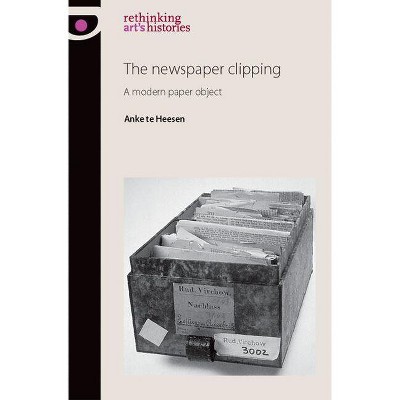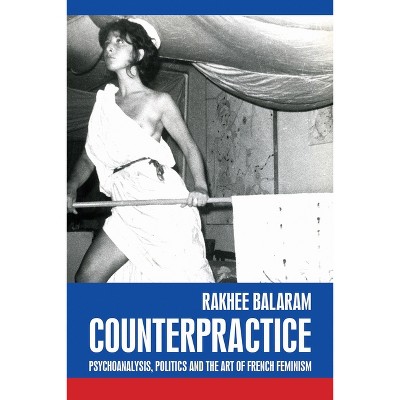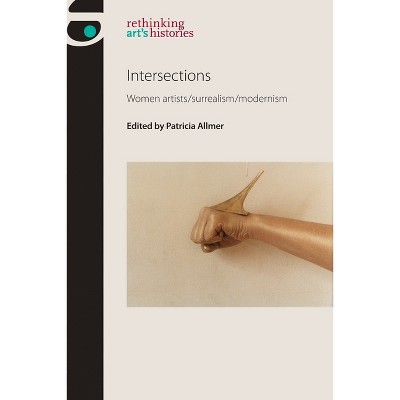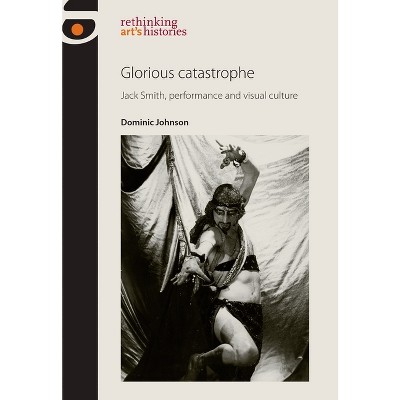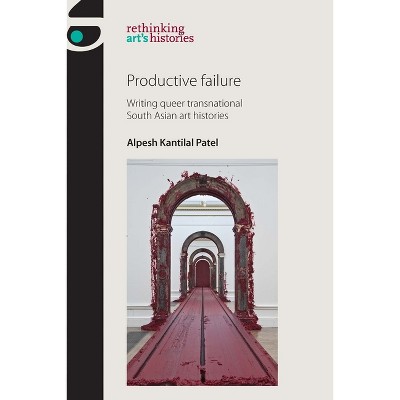Architecture and Ekphrasis - (Rethinking Art's Histories) by Dana Arnold (Paperback)

About this item
Highlights
- Architecture and ekphrasis examines how eighteenth-century prints and drawings of antique architecture operated as representations of thought.
- About the Author: Dana Arnold is Professor of Art History at the University of East Anglia
- 168 Pages
- Architecture, Criticism
- Series Name: Rethinking Art's Histories
Description
About the Book
This well-illustrated, accessibly written book examines how eighteenth-century prints and drawings of antique architecture operated as representations of thought. Combining original archival material with cultural theory, the book considers the idea of the past and the role of space and time in the visual ekphrasis or description of its architecture.Book Synopsis
Architecture and ekphrasis examines how eighteenth-century prints and drawings of antique architecture operated as representations of thought. Using original archival material, it considers the idea of the past in the period, specifically how it was discovered and described, and investigates how space and time inform visual ekphrasis or descriptions of architecture. The idea of embodiment is used to explore the various methods of describing architecture - including graphic techniques, measurement and perspective - all of which demonstrate choices about different modes of ekphrasis. This well-illustrated, accessibly written study will be of interest to academics and students working in a broad range of subject areas. It will also be an essential teaching tool for increasingly popular cross-disciplinary courses.From the Back Cover
'This provocative, highly readable book explores the potent exchange between visual and verbal description, considering what the visual allows us to explore and convey that the verbal does not and vice versa. Using a wide range of scholarly, pictorial and technical sources, Dana Arnold examines how words and writing help make us understand the object being described.'
Diane Favro, Distinguished Research Professor, Architecture and Urban Design, UCLA
Keith Moxey, Barbara Novak Professor of Art History, Barnard College Architecture and ekphrasis examines how eighteenth-century prints and drawings of ancient architecture operated as representations of thought with their own syntactical, linguistic and cultural qualities. Beginning with the idea that the spatial world of the image and the temporal world of the text share common ground as embodiments of human cognition, the book questions how they are brought to bear on the spatial and temporal aspects of the architecture of antiquity as evident in prints and drawings made of it. Following on from this, the book explores how this pan-European currency of visual descriptions influenced architectural theory. The idea of embodiment is used to investigate the various methods of describing architecture, including graphic techniques, measurement and perspective, all of which demonstrate choices about different modes of description or ekphrasis.
Review Quotes
'This provocative, highly readable book explores the potent exchange between visual and verbal description, considering what the visual allows us to explore and convey that the verbal does not and vice versa. Using a wide range of scholarly, pictorial and technical sources, Dana Arnold examines how words and writing help make us understand the object being described.'
Diane Favro, Distinguished Research Professor, Architecture and Urban Design, UCLA
Keith Moxey, Barbara Novak Professor of Art History, Barnard College 'In this innovative addition to the "Rethinking Art's Histories" series, which takes untraditional approaches to the history of art, Arnold (Univ. of East Anglia, UK) looks at how visual representations can have linguistic qualities and serve as verbal description. In a previous title from Manchester University Press, Writing for Art: The Aesthetics of Ekphrasis, 2008, Stephen Cheeke provided a solid introduction to the subject. The present title looks at how drawings, particularly prints, of the 18th century represent a new language of architectural description for the buildings of antiquity, functioning as ekphrasis. Having concluded that the verbal is not always adequate or accurate to describe ancient architecture, the author analyzes how two-dimensional works on paper can lead to a richer description with greater influence than the written word. The book includes discussion of the understanding of antiquity in the 18th century; the media of drawing and printmaking and the importance of line and space during this period; and gender, specifically how the absence or presence of women impacted the visual ekphrasis of these ancient structures. A substantive bibliography and numerous notes are included.'
--E. M. Hansen, The John and Mable Ringling Museum of Art
Summing Up: Recommended. Graduate students, researchers, faculty.
About the Author
Dana Arnold is Professor of Art History at the University of East AngliaShipping details
Return details
Trending Art, Photography & Design Books






